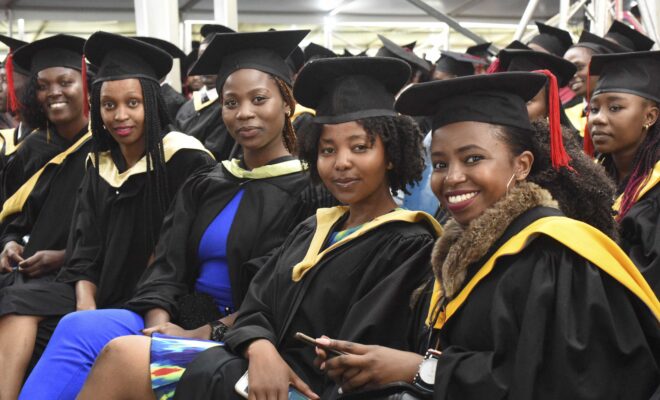Towards #WHEC2022. Webinar 10: Impact of COVID-19 on higher education
One of the main axes of UNESCO World Higher Education Conference #WHEC2022, to be held in Barcelona (Spain) next May, , is the impact of Covid-19. In order to transfer the approaches of Latin America and the Caribbean, IESALC is carrying out a specific Regional Consultation, through a variety of events in order to bring together as many voices from different sectors as possible.
On this occasion, experts in the area participated in this online seminar – organized jointly with the IDB, the OEI, Santander Universities and the Ibero-American General Secretariat – to analyze how Covid-19 boosted online learning towards a new dimension, still full of challenges, but at the same time deepened the already existing gaps.
Moderator: Victoria Galán-Muros, Head of Research and Analysis – UNESCO IESALC
Some ideas from the speakers

Francesc Pedró, Director UNESCO IESALC
No one can deny the multidimensional effects that the pandemic has had and will continue to have on higher education (HE). There have been effects both in terms of the volume and quality of learning; in socio-emotional balances and imbalances, caused not only by isolation but also by the lack of opportunities for the prototypical social encounters that occur in HE; the financing of families and of the public and private sector; and the effects on teaching, administrative and service staff.
The question is not so much how bad the pandemic has been, but above all, what can we learn in order to guarantee a way out of the crisis, and the eventual redesign of the HE offer. It is a matter of building a better HE to achieve a different horizon than the one we had before Covid 19: with greater quality, equity and inclusion.

Francisco Marmolejo, President of Higher Education, Qatar Foundation, Mexico
At this moment there are more questions than answers about the implications of Covid-19 in the medium and long term in HE. It is necessary to analyze the scenarios to minimize the risks of uncertainty.
It is not a pandemic but a syndemic, and it goes beyond the epidemiological phenomenon. This is a concept conceived in the 1990s by the anthropologist and physician, Merrill Singer, which reveals that biological and social interactions are important for prognosis, treatment and health policy.
The entire HE system in the world was shut down, almost 200 million students stopped going to classrooms. Consequently, the impacts of this phenomenon are much more than the epidemiological aspect, so we must analyze it from a broader perspective.
Universities had to adapt quickly to deal with what was urgent, and put aside what was important. The case of Mexico reflects what most HEIs in the region did: find ways to continue teaching, train teachers, orient the community, establish virtual pages, in some cases provide technological resources to students and teachers, and make their academic, administrative and regulatory services more flexible.
Did the HE really changed? A number of challenges have arisen: how to minimize the learning deficit that all students and HEIs have had to experienced due to the sudden transition to distance learning, and what the impact on their productive life, as well as on their family, social and economic environment, will be.
Some questions: How to minimize the inequity that was revealed regarding the technological gap? How to maintain the interest of students and evaluate their learning? How do we attend to the mental health challenges of students and academics? How to guarantee the continuation and improvement of the research work? How are we going to mitigate the financial implications due to the economic contraction?
Some lessons learned: insufficient preparation and planning; the operational environment was more fragile than what we had previously thought; the transition to non-face-to-face is not a panacea; in some cases, institutional leaderships were not prepared for times of crisis, the deficiencies and limitations were exposed and will become more acute; dogmas were challenged.
The challenges in this transition: how are we going to contribute to an economy and society that is increasingly digital; how do we use technology to foster a better and more inclusive education; how to respond to the growing demand for HE in the region, its quality and relevance in public and private universities; how to give a global sense to HE without losing the local perspective; and finally, how to make our systems more flexible and adaptable.
The pace of research on some topics grew under a scheme of cross-border, interdisciplinary, inter-sectoral and multilateral collaboration; academics showed resilience; and open science grew. On the negative side, Covid-19 implied physical immobility, asymmetries in what is researched and how research is supported.
Opportunities: we have to take advantage of the circumstance to reinvent, redesign HE. Improve: access with equal opportunities; a more coordinated system of quality and relevance; governance of HEIs and institutions adapted to the new realities; change of the operational and financial model; modification of the generational replacement of the teaching staff. We have a great opportunity to adjust teaching to the needs of the environment, to form global citizens who are competitive and committed to their community. We must think that our traditional paradigm can change.

Rocío Victoria Quispe, General Director of University Higher Education of the Peruvian Ministry of Education
In order to define the challenges, it is essential to have reliable and timely information to specifically identify where the interventions that the State must develop in all areas of HE, should be: artistic, technical, pedagogical and university.
In the Peruvian case, we have seen the pandemic as an opportunity. At first it demonstrated the precariousness of public universities to move to a remote education, it also allowed the development of skills and technological tools in the entire university community, and this, in turn fosters progress in the internationalization of the university.

Cecilia Paredes Verduga, rector of the Escuela Superior Politécnica del Litoral, Ecuador
I hope the changes are radical and help us to evolve. The first change was the virtualization of education, which required technological upgrading for teachers, students and management.
Despite the advances, the road is long and requires a change of focus, not only to automate and digitalize processes, but also to rethink services from the point of view of quality for the entire community. It is also necessary to strengthen decision-making processes based on real data and in real time, as well as to rethink the academic “business model” for it to be relevant to society and the productive sector.

Rudy Laddaga, CEO and founder of Gnius Club, Mexico
Technological development has an exponential curve and we are just beginning the vertical one; this is going to be an accelerated process of change.
Teachers, as we know them now, will disappear in 2030 with the development of new platforms of self-learning systems that will become mentors and coaches.
There will be formal learning spaces in metaverses. Advances in artificial intelligence will impact the entire education sector, towards personalized learning models and with platforms that will adapt content in real time to the students` learning styles.
Virtual personal assistants will emerge, and industries will be linked to different learning platforms and through different social networks, which will result in the preparation of candidates for job offers with curricula tailored to corporations, and with educational programs developed with artificial intelligence models.

María Altagracia López, coordinator of the Center for Innovation in Higher Education (CINNES), Instituto Tecnológico de Santo Domingo, Dominican Republic.
The HEIs that had a face-to-face modality before the pandemic also had unequal levels of development in regard to the integration of technology into the educational process. The innovative strategies that have been developed have also had different levels.
Positive aspects: teacher and student training in order to enable them to take ownership of technologies and learning environments; permanent and continuous individual and group support systems, including tutoring systems. The certification and recertification of teachers must remain and be strengthened in the future, as well as the psychosocial and emotional care programs.
Presentation
El impacto del COVID en la educación superior: algunas consideraciones, (The impact of COVID in higher education: some considerations), Francisco Marmolejo
Learn more: Latin America and the Caribbean Consultation addressed main themes of the #WHEC2022

RELATED ITEMS








